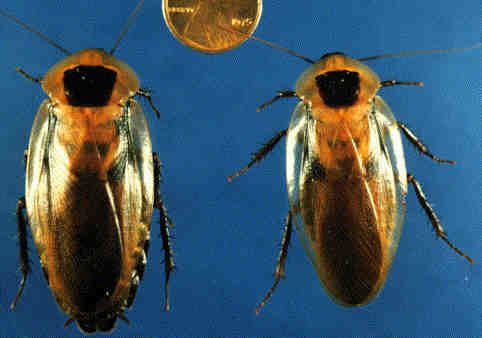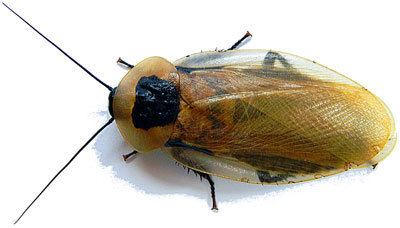Higher classification Blaberus | Scientific name Blaberus discoidalis Rank Species | |
 | ||
Similar Blaberus, Insect, Death's head cockroach, Blattodea, Blaberus giganteus | ||
Discoid maintenance video blaberus discoidalis aka false deathheads
Blaberus discoidalis, commonly known as the discoid cockroach, tropical cockroach, West Indian leaf cockroach, false death's head cockroach, Haitian cockroach, and drummer, is a cockroach native to Central America of the “giant cockroach” family, Blaberidae.
Contents
- Discoid maintenance video blaberus discoidalis aka false deathheads
- Distribution
- Locomotion
- Pet food
- Fuel cell
- References

The adult is around 35–45 mm (1.4–1.8 in) in length, and is tan with a dark brown to black patch on its pronotum. The juvenile is brown with tan speckles, and matures to adulthood in 4–5 months. Adults have wings but are not active fliers, and they can not climb smooth vertical surfaces, simplifying their care in captivity.

B. discoidalis is called the false death's head cockroach because of its superficial resemblance to the death's head cockroach, Blaberus craniifer.

Distribution

B. discoidalis is found in Jamaica, Cuba, Haiti, Puerto Rico, Puerto Rico (Vieques Island), Panama, Colombia, Venezuela, Trinidad and Tobago, and Florida.
Locomotion
The movement of B. discoidalis is relatively slow and inefficient compared to the common cockroach Periplaneta americana, which sprints on its hind legs more than twice as fast at 50 body lengths per second. In laboratory tests, specimens were adept at obstacle climbing, and maintaining stability with miniature “cannons” strapped to their bodies to knock them off balance. The species served as the basis for the kinematics design of a several cockroach-inspired robots.
Pet food
They are very easy to raise in captivity, so make good feed for insectivorous pets such as tarantulas, bearded dragons, and other lizards.
These animals breed readily in captivity. They reach breeding age in about 6 months if kept warm, with 85–90°F recommended for more productive breeding. Females carry their eggs inside a brooding pouch within their abdomens until they hatch.
Fuel cell
B. discoidalis was used in an experiment to create a miniature fuel cell, producing electricity from naturally occurring sugar in the insect and oxygen in the air. The power density of the species is considered a good design target for small robots.
